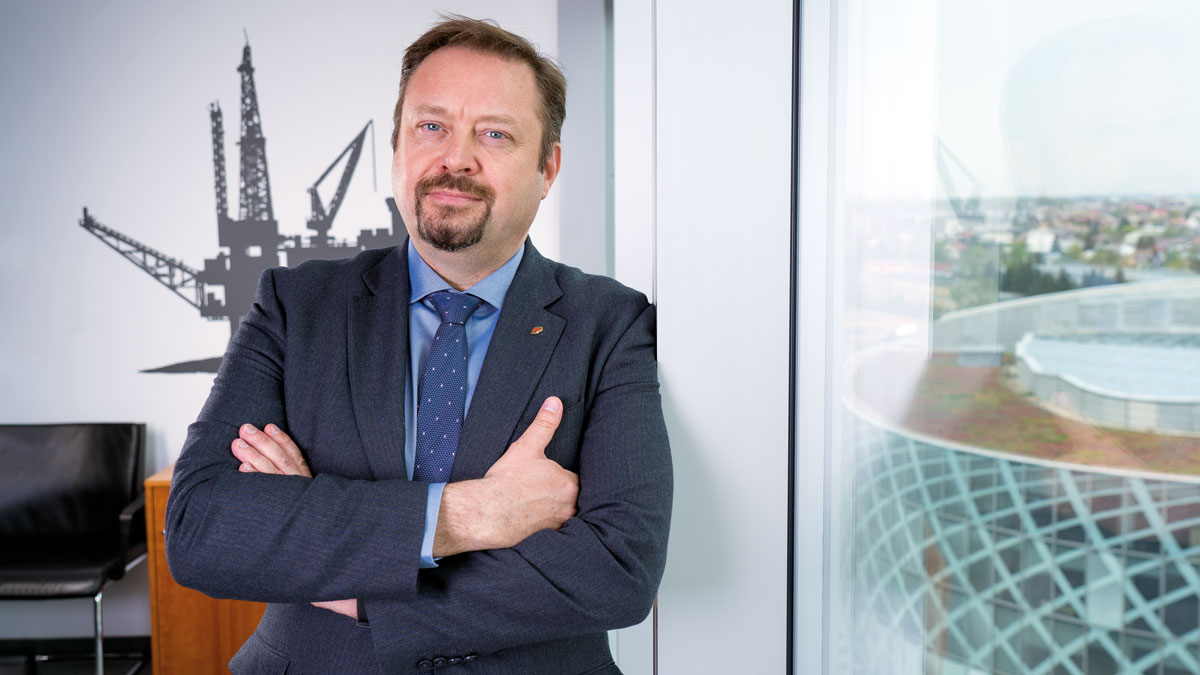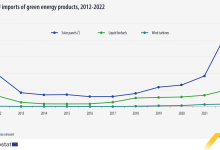There is no Green Transition Without Natural Gas
According to the European Commission, the green transition needs to happen at a local level, with citizens engaged in climate activism and policy. Amid this intense debate, it is crucial that we continue to focus on what really matters: finding the most effective way to reach our common goal of carbon neutrality by 2050.
The EU Taxonomy remains one the most important legislative exercises shaping the future of the energy sector across the European Union for the next 30 years. The public consultation concluded last December exposed a high degree of polarization among stakeholders. From industry players to invested citizens, they all seemed to expect more from the European Commission draft delegated act.
For the green transition to be successful, we need to effectively use the competitive advantage provided by the availability of certain resources such as natural gas. The role of natural gas as a transition fuel is critical for the sustainable transformation of coal-intensive regions in Central and Eastern Europe, for example. It provides for a viable, accessible, and technologically mature alternative that could lead to significant reduction of greenhouse gas emissions and pave the way for even more ambitious targets such as the introduction of renewable and decarbonized gases, as well as support the deployment of more renewable electricity generation. Additional, through adequate research, development, and demonstration the hydrogen as a fuel of the future produced from natural gas represents the pathway to decarbonisation in the context of European policies for environment, energy, and green transition to sustainable economy.
This approach will ensure an inclusive and just energy transition in some of the most vulnerable communities across the European Union. Failing to safeguard this objective will compromise the reputation of the European green transition as a fair deal for all the Europeans.
“Transition fuels play an essential role, which must be safeguarded to ensure an efficient transformation of the industrial sector and equitable access to financing for all companies committed to decarbonize”
The EU Taxonomy debate should strive to remain fact-based and its implementation realistic. Certain technologies, such as hydrogen, have a clear undisputed potential for the future. However, for now, we lack the adequate production, transport, and storage facilities, and therefore we lack the ability to use renewable and decarbonized gases in the electricity generation sector on a large scale. For instance, the hydrogen economy is far from being an immediate, quickly achievable reality. To require the immediate implementation of strict emission standards when no viable technology is commercially available cannot be qualified as a fact-based, scientific approach. Transition fuels play an essential role that must be safeguarded to ensure an efficient transformation of the industrial sector and equitable access to financing for all companies committed to decarbonize.
“Setting emission benchmarks of 250g of CO2e per kWh calculated on the economic life cycle of the asset could be a realistic solution only for cogeneration units”
The Technical Expert Group (TEG) provided a clear description of what we should expect from a sustainable economic activity in terms of emission standards. That was indeed the task that the TEG was assigned with. The European Commission should however assume the political responsibility for putting forward a realistic implementation calendar that is scientifically pragmatic, non-ideological and balanced. The implementation calendar should make sure that we meet our common 2050 goal, and that all member countries can contribute to this endeavour while reaping the benefits of the green transformation of the energy sector — irreversibly departing from coal generation with a soft landing toward the 2050 target. Setting emission benchmarks of 250g of CO2e per kWh calculated on the economic life cycle of the asset could be a realistic solution only for cogeneration units but excludes power generation units (condensing units) from the opportunity to decarbonize quickly and sustainably. Also, BREF BAT (Best Available Techniques) reference document for large combustion plants indicates values over 350g of CO2e per KWh.
In our view, imposing a threshold is not appropriate for the transitional activities. The transitional activity threshold should be based on the best performance of technology and signal the decarbonization pathway. Such an approach will ensure a trajectory for meeting the targets and ensure inclusion of activities that contribute to emission reduction, including retrofitting of existing processes. The threshold can be reduced in time, but should not be set too low, too early. Otherwise, suitable technologies that can contribute to the transition or that could be retrofitted will be excluded already at this stage.
“There is no such thing as one-solution-fits-all as there is unfortunately no breakthrough technology”
Central and Eastern Europe will continue to require significant investments in improving the regional energy interconnections, revamping the infrastructure, and replacing the existing generation capacities while attempting to combat the side effects of this transformation, which will be felt by the people living and working in the coal-intensive regions. If the European green transition will come to associate with poverty, destitution, and hopelessness, then such a policy will fail us all — industry leaders, policymakers, social partners, and NGOs — but first, the citizens of the European Union.
There is no such thing as one-solution-fits-all as there is unfortunately no breakthrough technology that would allow this. There is also a clear danger in applying a multitude of solutions to address all potential concerns, regardless of how improbable they are. Europe should aim to have a balanced approach that guarantees an orderly and swift transition from highly polluting power generation to mature low-carbon technologies, such as natural gas electricity generation capacities, while ensuring that no European citizens are left behind. A clear, realistic, and scientifically informed roadmap is needed to enhance the sustainability of the sector in the medium- to long-term, to guarantee the attainment of the 2050 carbon-neutrality objective.
Franck Neel is the President of The Oil and Gas Employers’ Federation (FPPG)







